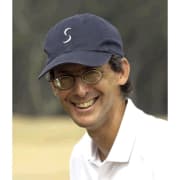U.S. Open Preview Showcases The Country Club's Rugged Look

BROOKLINE, Mass. — When it comes to championship sports, not many metropolitan areas in the U.S. come close to Boston in terms of intensity. All it takes is an hour of listening to sports radio in the aftermath of both a playoff loss by the Celtics and a questionable draft by the New England Patriots and your ears will ring for half the day.
When it comes to legendary sports venues in town, The Country Club, in the leafy suburb of Brookline, is right up there with Fenway Park as a place where great sports history has taken place. And when 156 of the world’s best golfers assemble here June 16-19 for the 122nd U.S. Open, we’ll all be treated to more nostalgia.
That’s at least the promise of a craggy, Old World golf course like this one, home to the most famous longshot win in golf history — by an unknown 20-year-old amateur named Francis Ouimet back in 1913. It was also here in 1999 where the Ryder Cup became a mass spectacle sport thanks to a wild, last day, come-from-behind win by the U.S. team against the Europeans.
Now comes the fourth U.S. Open ever held here and the 17th USGA national championship in all on these grounds, on a playing platform newly restored by Gil Hanse to test the shot-making skills and emotional patience of guys used to booming the ball a long way.
The course they will confront is not long by modern standards — none are, these days, in fact. Think of it this way: At 7,264 yards, it is only 254 yards longer than the 7,010 it measured back in 1988 for the last U.S. Open held here. That’s only 3.6% longer, which hardly compensates for the accompanying growth in distance off the tee that PGA Tour players register. In 1988, the season average for drives was 263 yards. Now it is 34.6 yards longer — or 297.6 for the season thus far. That’s 13% longer.
Of course the routing is different, and par will be 70, not 71 as it used to be. For those math geeks who like to measure things out, that means the average yardage per par stroke goes up from 98.7 to 103.8 — a hike of 5.2%.
The real difference will be the playing surfaces, not the distance. The Country Club’s greens are small by modern standards, averaging only 4,388 square feet. They’ve been expanded some since 1988, but the widening out to recapture lost hole locations means that the targeted surfaces are actually more demanding and — potentially — can be set up in very unsettling ways.
Case in point comes at a hole that used to be bypassed in the championship rota here, but that has now been recaptured — the drop shot par-3, 131-yard 11th hole. Nothing but a wedge — but to what an undulating surface, one that’s squeezed up front and left by sand and that falls off steeply behind. There’s a front-left hole location on a little teardrop corner of the putting surface that could turn the experience here into a 15-minute ping-pong match with your own ego.
It takes some nerve to reroute a championship course that has lain at the heart of American golf for over a century. It helps having 27 holes to work with. But it also helps to have someone like Hanse, who is not afraid to adjust. Credit, too, goes to the USGA and to the club itself. Without going into all the adjustments, let’s just say that the hole sequence from the 4th to the 14th holes has shifted, with the biggest changes coming at both ends of the length spectrum.
Contrasting that aforementioned little par-3 11th is the monstrous, uphill, 619-yard par-5 14th — an extension of the old 12th hole (don’t ask), played from a new back tee that feels like it’s in the adjoining town of Newton.
This will be an interesting U.S. Open from the standpoint of seeing how golf defense deals with golf offense. The players will bring all their firepower, which they obviously have in abundance. But they key to winning here really will be hitting fairways, avoiding the dense rough, and controlling approach shots to small, devilishly contoured greens.
Along the way, golf fans will be able to follow the action live on a whole panoply of digital apps and live streaming that will bring to life the event like never before. What they’ll see is great golf played on the rugged terrain of a classic New England landscape. A “cathedral of the game,” as the USGA’s player relations staffer Jason Gore likes to call it. That’s an apt name for one of the five founding member clubs of the USGA — a relationship that dates back to 1894.
